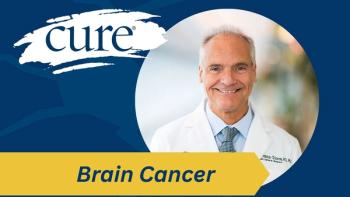
Adolescents and Young Adults With Sarcoma ‘Urgently Need’ Better Education on Risks of Opioid Misuse
Adolescents and young adults with sarcoma, a group of cancers that begin in the bone and soft tissue, need more education regarding chronic pain management and opioid addiction, according to a group of researchers.
Recent study results on new persistent opioid use among adolescents and young adults (AYAs) with sarcoma confirm previous findings that there is an urgent need for more comprehensive education on the dangers of opioid addiction and misuse for this patient population, according to a group of researchers from Columbia University Irving Medical Center in New York City.
The results — which were recently published in the journal Cancer — demonstrated that more than half of approximately 1,000 AYAs with sarcoma, a type of cancer that originates in tissues such as the bones or muscles, received an opioid prescription during treatment. Of those individuals, 23% of patients were labeled new persistent opioid users because they had filled at least two opioid prescriptions during the year after their treatment was over.
In the study, Melissa P. Beauchemin, director of the NCI-Community Oncology Research Program at Herbert Irving Comprehensive Cancer Center at Columbia University, and colleagues reviewed a nationally representative database of insurance claims from 938 patients in the United States between the ages of 10 and 26 years who were opioid naive, meaning that they did not fill an opioid prescription from 365 to 31 days prior to their first cancer treatment.
The cohort consisted mainly of patients with soft tissue sarcoma (49%) and osteosarcoma (42%). Of the 938 patients, 599 (64%) filled an opioid prescription during the course of their treatment. Of those 599 patients, 77% received no more prescriptions for opioids following the completion of their treatment. The other 23% of patients continued filling opioid prescriptions up to a year after their treatment was finished.
Of note, the number of prescriptions given to patients ranged from one to 97. More than half of the patients received either two to four prescriptions (31%) or five or more prescriptions (24%).
A patient with a mental health disorder diagnosis was most likely to become a new persistent opioid user, according to the findings. Moreover, the results showed that 20.4% of patients on Medicaid became persistent users while 12.6% of patients on commercial insurance became persistent users.
“This study highlights the need for high-quality pain assessment and management balanced with safe (opioid) prescribing,” the study authors wrote.
For instance, in 2016, the American Society of Clinical Oncology published a guide for the management of chronic pain in cancer survivors. However, as the study authors noted, this practice guideline did not include children and adolescents. Moreover, the authors explained, there are no published guidelines that address pain management or the prescribing of opioids for the AYA patient population with cancer.
“Because high quality pain management is a critical component of cancer care and (adolescents and young adults) are a vulnerable population at risk for opioid misuse and overdose, there is an urgent need to develop (adolescent and young adult)-specific pain management guidelines, education and anticipatory guidance,” the authors concluded.
For more news on cancer updates, research and education, don’t forget to




